Houseplants are more than just pretty decorations—they improve air quality, reduce stress, and bring life into your space. Whether you’re new to plant care or a seasoned green thumb, this list of 13 common houseplants will inspire you to add some greenery to your home.
From low-maintenance options to vibrant foliage that makes a statement, these plants fit every lifestyle and space. Some thrive in bright, sunny rooms, while others do well in low-light corners, making them perfect for apartments, offices, or small living areas.
Plus, houseplants can boost mood, increase productivity, and even help regulate indoor humidity.
Learn which plants are beginner-friendly, how to care for them, and tips to keep them thriving. Whether you’re looking for air-purifying plants, pet-friendly options, or ones that require minimal watering, this guide will help you choose the perfect greenery for your home!
1. Snake Plant (Sansevieria)
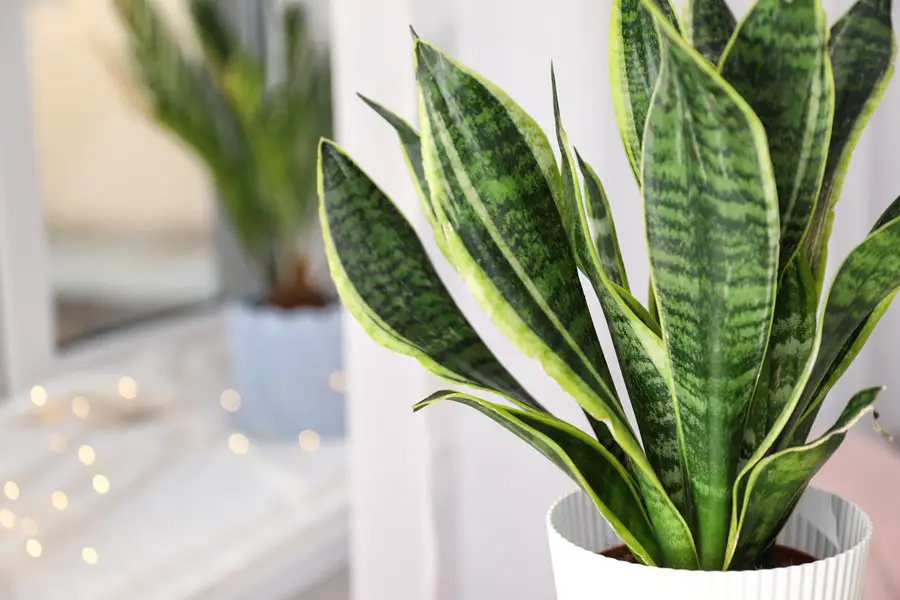
The snake plant, also known as “mother-in-law’s tongue,” is one of the most resilient common houseplants. Perfect for busy individuals or beginners, this plant tolerates low light, irregular watering, and even neglect, making it a hassle-free addition to any home.
Its upright, sword-like leaves add a modern touch to any space, and it can thrive in a variety of conditions.
Care Tips:
- Light: Thrives in low to bright indirect light. Can also tolerate some direct sunlight.
- Watering: Allow soil to dry out completely between waterings. Water roughly every 2–3 weeks. Overwatering can lead to root rot.
- Humidity: Adaptable to different humidity levels, making it great for any room.
- Soil: Prefers well-draining soil, such as a cactus or succulent mix.
- Bonus Tip: Snake plants not only purify air toxins like formaldehyde and benzene but also release oxygen at night, making them an excellent choice for bedrooms. They require minimal upkeep and are ideal for people who travel frequently or have a busy schedule.
2. Pothos (Epipremnum aureum)

Often called the “Devil’s Ivy” for its hardiness, pothos is one of the most popular common houseplants due to its fast-growing, trailing vines and minimal care requirements. With glossy, heart-shaped leaves, this plant adds a touch of greenery to any space and thrives in various conditions.
Pothos is an excellent choice for beginners, as it can grow in both water and soil, making it a versatile and forgiving plant.
Care Tips:
- Light: Prefers bright, indirect light but tolerates low light, making it perfect for offices and dim corners.
- Watering: Water when the topsoil feels dry, approximately once a week. Overwatering can cause root rot, so ensure proper drainage.
- Humidity: Adapts to normal household humidity but benefits from occasional misting.
- Soil: Thrives in well-draining potting mix but can also grow hydroponically in water.
- Unique Feature: Pothos is excellent for hanging baskets or shelves due to its trailing vines. Regular pruning encourages bushier growth and prevents legginess. It’s also an effective air purifier, helping to remove indoor pollutants like benzene and formaldehyde.
3. Spider Plant (Chlorophytum comosum)
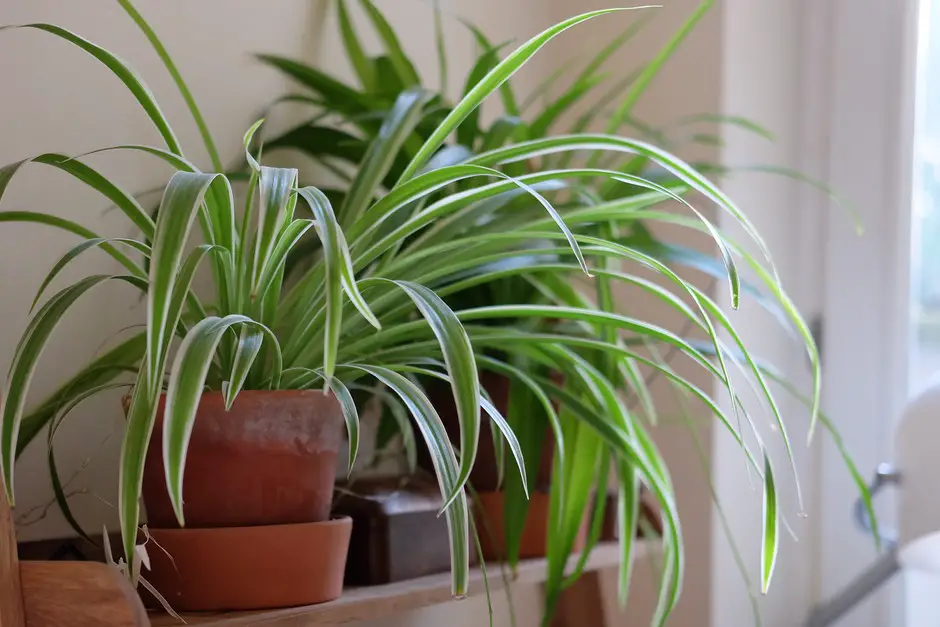
Spider plants are one of the most adaptable common houseplants, known for their arching green-and-white striped leaves and ability to thrive with minimal care. They are perfect for offices, shelves, and kitchens, bringing a lively touch to any space.
One of their most unique features is the production of baby plantlets, or “pups,” which dangle from the mother plant and can be easily propagated into new plants.
Care Tips:
- Light: Prefers bright, indirect sunlight but tolerates low light, making it ideal for various indoor spaces.
- Watering: Keep soil evenly moist but not soggy. Water every 1–2 weeks, adjusting based on humidity and season.
- Humidity: Prefers moderate humidity but adapts well to normal household conditions.
- Soil: Grows best in well-draining potting mix to prevent root rot.
- Bonus Tip: Spider plants are excellent for improving indoor air quality by removing pollutants like carbon monoxide and formaldehyde. They’re also non-toxic to pets, making them a great choice for pet owners!
4. Monstera Deliciosa
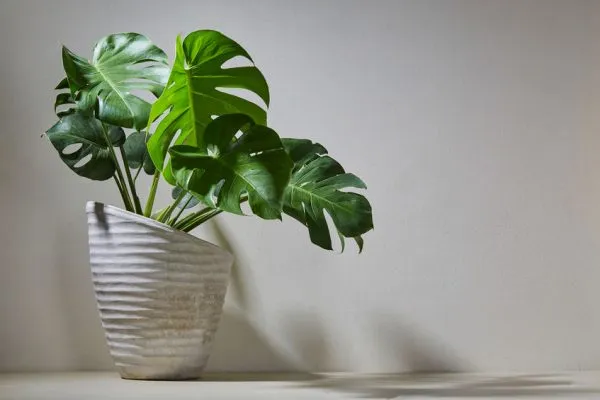
Known for its iconic split leaves, the Monstera Deliciosa is a favorite among plant lovers, adding a bold, tropical vibe to any home. While it requires a bit more attention than some other common houseplants, its stunning foliage and fast growth make it a rewarding addition to any space.
With the right care, this plant can grow impressively large, creating a striking indoor statement piece.
Care Tips:
- Light: Needs bright, indirect light to thrive. Can tolerate some shade but grows best with ample light.
- Watering: Keep soil slightly moist but not soggy. Water every 1–2 weeks, allowing the top inch of soil to dry out between waterings.
- Humidity: Prefers high humidity but adapts to normal indoor levels. Misting or using a humidifier can help encourage larger leaves.
- Soil: Use a well-draining, nutrient-rich potting mix to support healthy growth.
- Bonus Tip: Use a moss pole or trellis to support its natural climbing habit, helping it grow taller and develop larger, more dramatic leaves. Wiping the leaves occasionally removes dust and keeps them looking vibrant!
Related Topics:
14 Table Top Plants Perfect for Your Home or Office
Faux Fiddle Leaf Fig Tree: All You Need to Know!
5. ZZ Plant (Zamioculcas zamiifolia)

The ZZ plant is one of the toughest common houseplants, making it perfect for beginners or those with a busy lifestyle. Its glossy, deep-green leaves add an elegant touch to any space, and its ability to tolerate neglect makes it nearly impossible to kill.
This plant thrives in various conditions, requiring minimal care while still looking lush and vibrant.
Care Tips:
- Light: Low to bright indirect light works well. Can survive in low-light apartments or offices but grows faster in moderate light.
- Watering: Highly drought-tolerant—water only when the soil is completely dry, typically every 2–3 weeks. Overwatering is the biggest threat to this plant.
- Humidity: Tolerates a wide range of humidity levels and does well in normal indoor conditions.
- Soil: Prefers well-draining soil, such as a cactus or succulent mix, to prevent root rot.
- Unique Feature: Ideal for low-light apartments or dark corners, the ZZ plant is also an excellent air purifier, helping remove toxins like xylene and toluene from indoor air. Plus, its slow growth means it rarely needs repotting!
6. Peace Lily (Spathiphyllum)
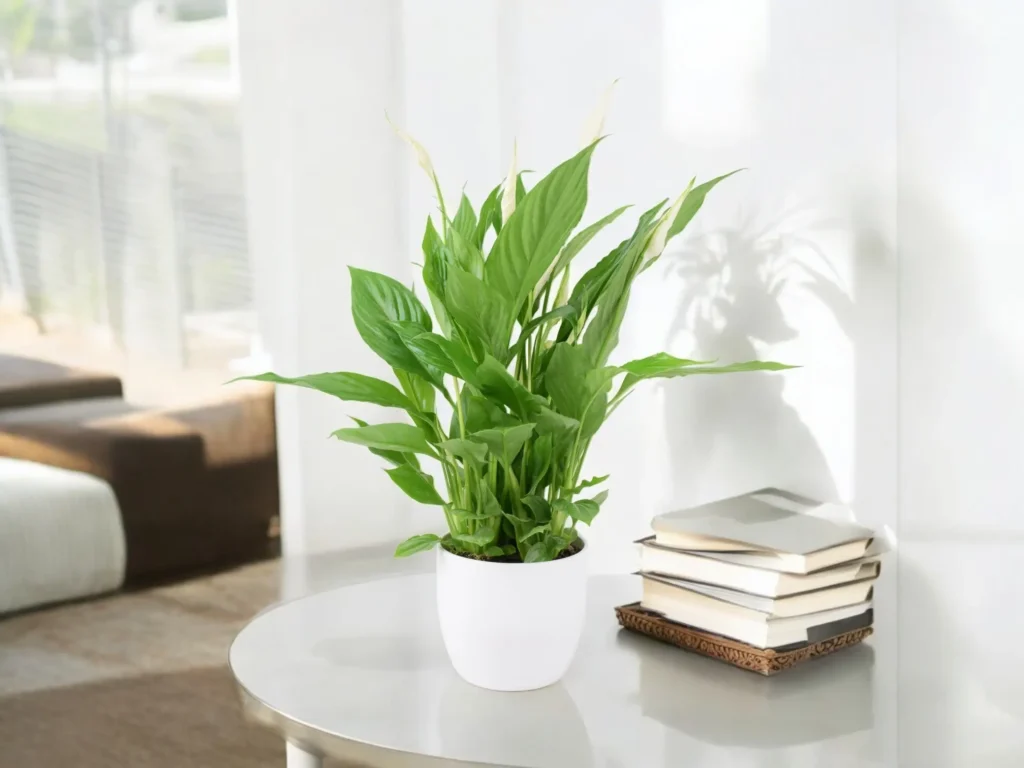
Beautiful and elegant, peace lilies are popular common houseplants known for their striking white blooms and lush green foliage. They are not only visually appealing but also excellent air purifiers, removing toxins like ammonia, benzene, and formaldehyde from indoor spaces.
However, pet owners should be cautious, as peace lilies are toxic if ingested.
Care Tips:
- Light: Bright, indirect light encourages more blooms, but the plant also tolerates low-light conditions.
- Watering: Keep soil consistently moist but not soggy. Water about once a week or when the plant begins to droop slightly.
- Humidity: Prefers high humidity; occasional misting helps prevent leaf browning.
- Soil: Grows best in well-draining, rich potting mix to retain moisture without waterlogging.
- Special Note: Peace lilies are great communicators—they signal their thirst by drooping slightly, bouncing back quickly after watering. For best results, wipe their leaves regularly to keep them dust-free and allow for better photosynthesis!
7. Fiddle Leaf Fig (Ficus lyrata)
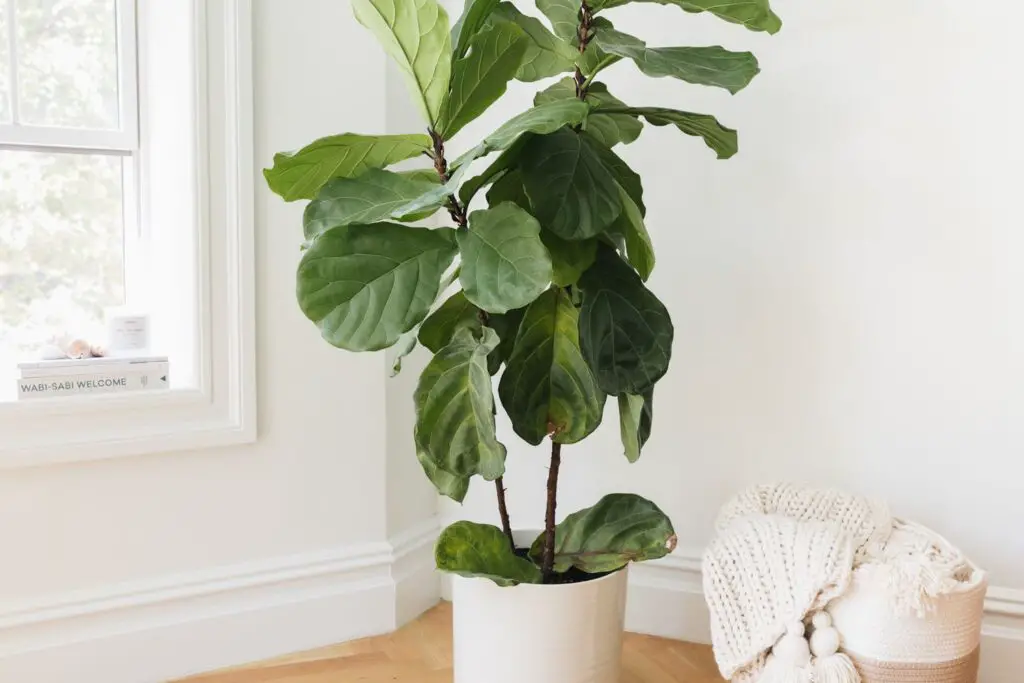
Stylish yet temperamental, the Fiddle Leaf Fig has become a statement piece for plant lovers and interior design enthusiasts. With its large, glossy, violin-shaped leaves, this plant adds a bold, modern touch to any space. However, it requires consistent care to stay healthy, making it a bit more demanding than other common houseplants.
Care Tips:
- Light: Needs bright, indirect sunlight or filtered direct light. Avoid placing it in low-light areas.
- Watering: Water when the top inch of soil is dry, typically every 1–2 weeks. Be cautious of overwatering, as this plant is prone to root rot.
- Humidity: Prefers higher humidity levels; occasional misting or a nearby humidifier can help.
- Soil: Well-draining, rich potting soil is essential for healthy root development.
- Bonus Tip: Rotate the pot regularly to ensure even growth and prevent the plant from leaning toward the light. Dust the leaves occasionally to help them absorb more sunlight and maintain their vibrant shine!
8. Aloe Vera
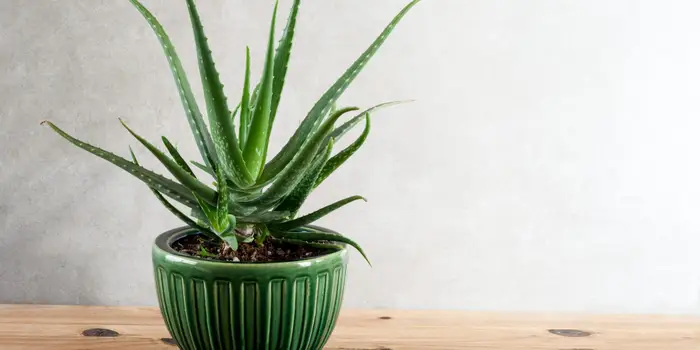
Aloe Vera is a visually striking and functional plant, prized for its soothing gel that can be used to treat minor burns, cuts, and skin irritation. This hardy succulent is one of the most useful common houseplants, requiring minimal care while adding a fresh, modern touch to any home. Its thick, fleshy leaves store water, making it incredibly drought-tolerant.
Care Tips:
- Light: Loves bright, indirect sunlight. It thrives near a sunny window.
- Watering: Water about every 2–3 weeks, allowing the soil to dry out fully between waterings. Overwatering can lead to root rot.
- Humidity: Prefers dry conditions and does well in average indoor humidity.
- Soil: Use a well-draining succulent or cactus mix to prevent excess moisture retention.
- Fun Fact: Aloe Vera thrives in kitchens or sunlit bathrooms, where its soothing gel is easily accessible for minor burns. It also helps purify the air by removing toxins like formaldehyde and benzene!
9. Rubber Plant (Ficus elastica)
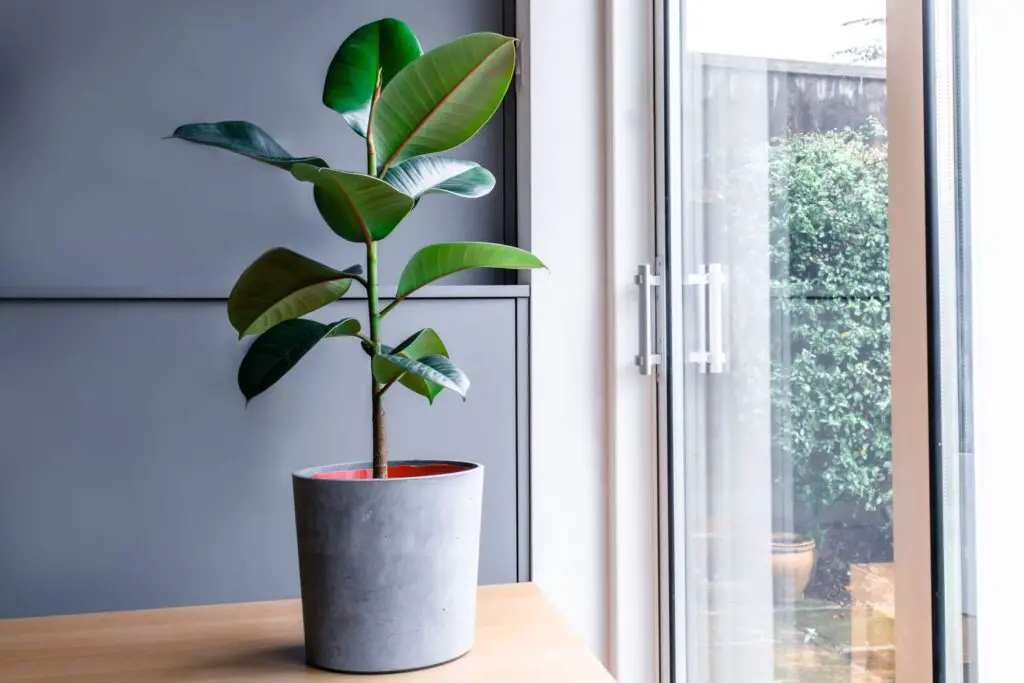
The rubber plant is a stunning, low-maintenance addition to any home, known for its bold, glossy leaves that add a sophisticated touch to interiors. As one of the most striking common houseplants, it thrives in various conditions and can grow into an impressive indoor tree with the right care.
Care Tips:
- Light: Prefers bright, indirect sunlight but can tolerate occasional cloudy days and lower light conditions.
- Watering: Water when the top inch of soil is dry. Avoid overwatering, as soggy soil can lead to root rot.
- Humidity: Adapts well to normal indoor humidity but benefits from occasional misting.
- Soil: Grows best in well-draining, nutrient-rich potting mix.
- Pro Tip: Clean the broad, shiny leaves regularly with a damp cloth to remove dust and help the plant absorb more light. For bushier growth, prune the top stems to encourage branching!
10. Boston Fern (Nephrolepis exaltata)
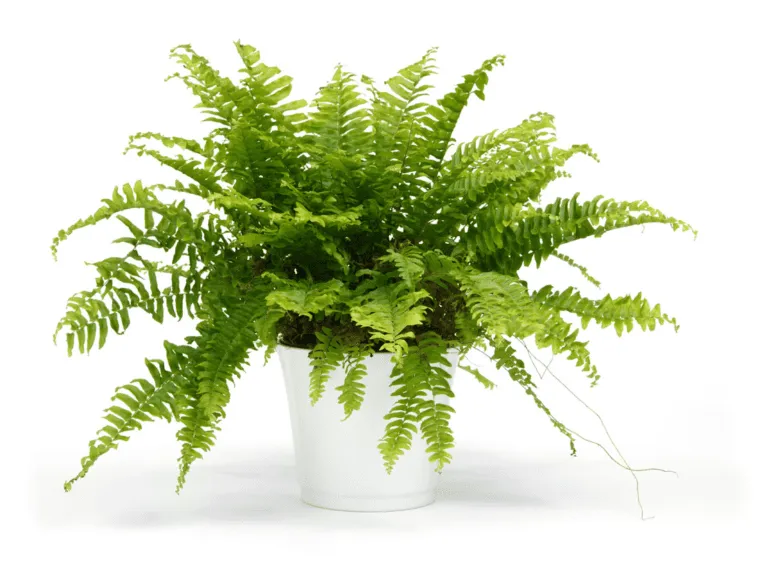
With its lush, arching green fronds, the Boston Fern adds texture and beauty to any space, making it a favorite among common houseplants. Though it requires a bit more attention than some low-maintenance plants, its elegant foliage and air-purifying qualities make it a rewarding addition to your home.
Care Tips:
- Light: Prefers bright, indirect light. Can tolerate some shade but thrives in well-lit areas.
- Watering: Keep soil consistently moist but not soggy. Water when the top layer of soil starts to feel dry.
- Humidity: Loves humidity! Misting the leaves regularly or placing it in a naturally humid room, like a bathroom, helps keep it healthy.
- Soil: Prefers well-draining, rich, organic potting mix to retain moisture.
- Special Note: The Boston Fern is an excellent natural air humidifier, making it ideal for improving indoor air quality. To prevent dry, crispy fronds, avoid placing it near vents, heaters, or direct sunlight.
11. Jade Plant (Crassula ovata)
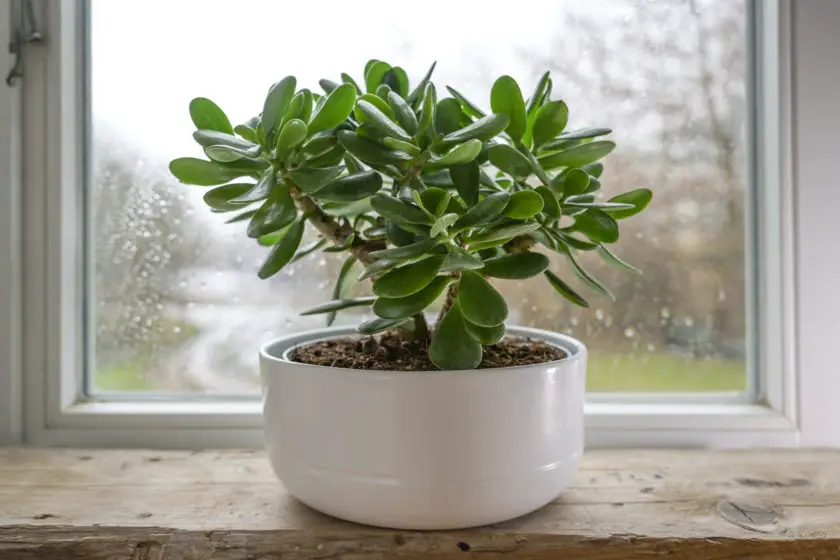
The Jade Plant is a beloved succulent known for its thick, glossy leaves and symbolic association with prosperity and good fortune. As one of the easiest common houseplants to care for, it thrives in containers and requires minimal watering, making it perfect for busy plant owners.
With proper care, this slow-growing plant can live for decades, becoming a cherished household staple.
Care Tips:
- Light: Requires bright, direct sunlight for optimal growth. A sunny windowsill is ideal.
- Watering: Water sparingly, every 2–3 weeks, allowing the soil to dry out completely between waterings. Overwatering can lead to root rot.
- Humidity: Prefers dry indoor conditions and does not require additional humidity.
- Soil: Use a well-draining succulent or cactus mix to prevent moisture buildup.
- Bonus Tip: The Jade Plant is an excellent choice for desks, small spaces, or office environments. Regular pruning encourages bushier growth, and its low-maintenance nature makes it a great beginner-friendly succulent!
12. Calathea (Prayer Plant)

Calatheas are prized for their vibrant, patterned leaves that “pray” by folding up at night, making them one of the most fascinating common houseplants. Though they can be a bit fussy, their striking foliage and movement make them a rewarding choice for plant lovers who enjoy a challenge.
Care Tips:
- Light: Prefers bright, indirect light but avoids direct sunlight, which can scorch the leaves.
- Watering: Keep soil consistently moist but not waterlogged. Use filtered or distilled water to prevent leaf browning from tap water chemicals.
- Humidity: Thrives in high humidity; regular misting or a nearby humidifier helps keep it happy.
- Soil: Well-draining, peat-based potting mix retains moisture while preventing soggy roots.
- Fun Fact: Calatheas are perfect for bedrooms because of their unique nighttime leaf movement, known as nyctinasty. Watching their leaves fold up in the evening and open again in the morning adds a dynamic, living element to your space!
13. Philodendron
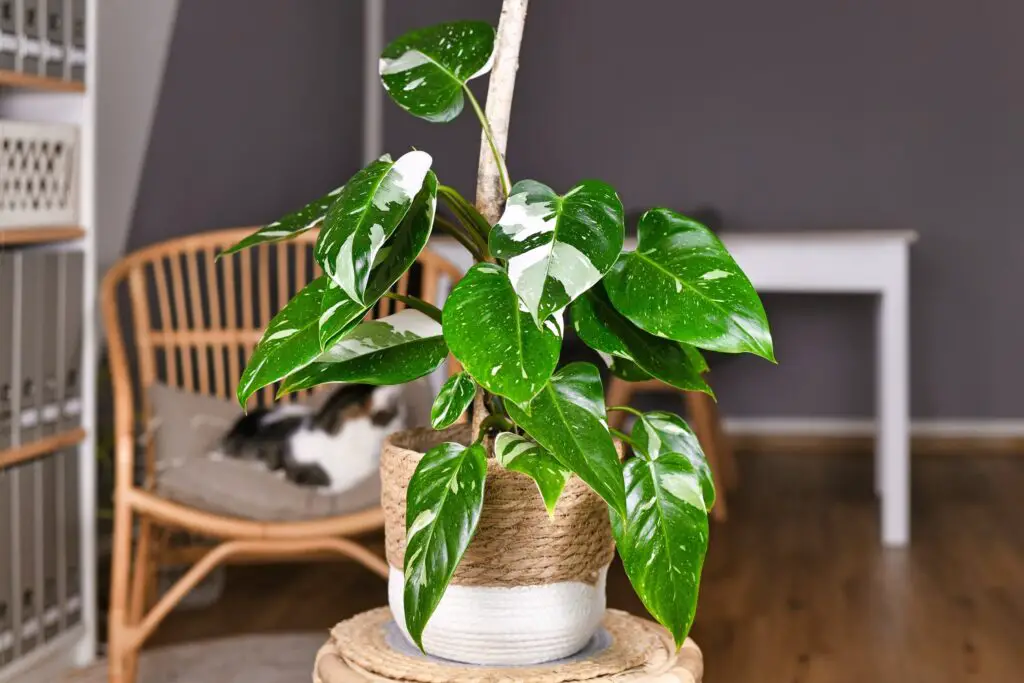
A close cousin to the pothos, the philodendron is one of the most versatile common houseplants, offering both trailing and upright varieties to suit any space. With its lush, heart-shaped leaves and forgiving nature, it’s a fantastic choice for beginners and experienced plant lovers alike.
Care Tips:
- Light: Thrives in bright, filtered light but adapts well to low-light conditions. Avoid direct sunlight, which can scorch the leaves.
- Watering: Allow the top inch of soil to dry out between waterings. Typically, water every 1–2 weeks, depending on the environment.
- Humidity: Prefers moderate to high humidity but tolerates normal indoor conditions.
- Soil: Well-draining potting mix with organic matter helps keep roots healthy.
- Pro Tips: Philodendrons can be trained as climbers using a moss pole for support or kept compact with regular pruning. They’re excellent air purifiers and look stunning in hanging baskets or on shelves!
Benefits of Common Houseplants
Incorporating houseplants into your home is more than just a decorative choice—it brings numerous benefits to your well-being and living environment. Here are some key advantages of growing common houseplants:
- Improve Air Quality: Many houseplants, like the Snake Plant, Peace Lily, and Boston Fern, help filter toxins such as formaldehyde, benzene, and carbon monoxide from the air, promoting a healthier indoor environment.
- Reduce Stress & Boost Mood: Studies have shown that being around greenery can lower stress levels, enhance focus, and improve overall well-being. Plants like Aloe Vera and Calathea create a calming atmosphere in any space.
- Increase Humidity: Certain plants, like Boston Fern and Peace Lily, release moisture into the air, improving indoor humidity. This helps prevent dry skin, irritated sinuses, and respiratory issues.
- Enhance Home Decor: With a variety of shapes, colors, and textures, houseplants like Monstera, Fiddle Leaf Fig, and Rubber Plant add a stylish, natural touch to any room, making it feel more inviting and lively.
- Low-Maintenance Options for Busy Lifestyles: If you don’t have time for high-maintenance plants, options like the ZZ Plant, Pothos, and Jade Plant thrive with minimal care, making them perfect for beginners and those with a busy schedule.
- Promote Productivity & Creativity: Adding greenery to workspaces has been linked to increased productivity and creativity. Desk-friendly plants like Philodendron and Snake Plant can help improve focus while working or studying.
- Natural Air Fresheners: Fragrant plants, such as Aloe Vera and Peace Lily, not only purify the air but also provide a subtle, natural scent, keeping your home feeling fresh.
By adding a few houseplants to your space, you can enjoy these incredible benefits while creating a more relaxing, stylish, and health-friendly environment.
Incorporating houseplants into your space is more than just a design choice—it enhances air quality, boosts well-being, and creates a serene, vibrant atmosphere. These 13 common houseplants cater to all experience levels, from beginners to seasoned plant enthusiasts.
Start with one or two plants that align with your home’s light and watering conditions. As you gain confidence in plant care, gradually expand your collection to reflect your personal style and preferences.
Happy planting!
FAQs:
1. What are the easiest houseplants for beginners?
If you’re new to plant care, start with low-maintenance options like the Snake Plant, Pothos, and ZZ Plant. These plants tolerate low light, infrequent watering, and are very forgiving of mistakes.
2. How often should I water my houseplants?
Watering frequency depends on the plant type and environment. A general rule is to water when the top inch of soil is dry. Succulents like Aloe Vera and Jade Plant need water every 2–3 weeks, while moisture-loving plants like Boston Fern and Calathea require consistently damp soil.
3. What are the best houseplants for low-light conditions?
Some of the best low-light houseplants include the Snake Plant, ZZ Plant, and Peace Lily. These plants can thrive in dimly lit rooms or offices with minimal natural light.

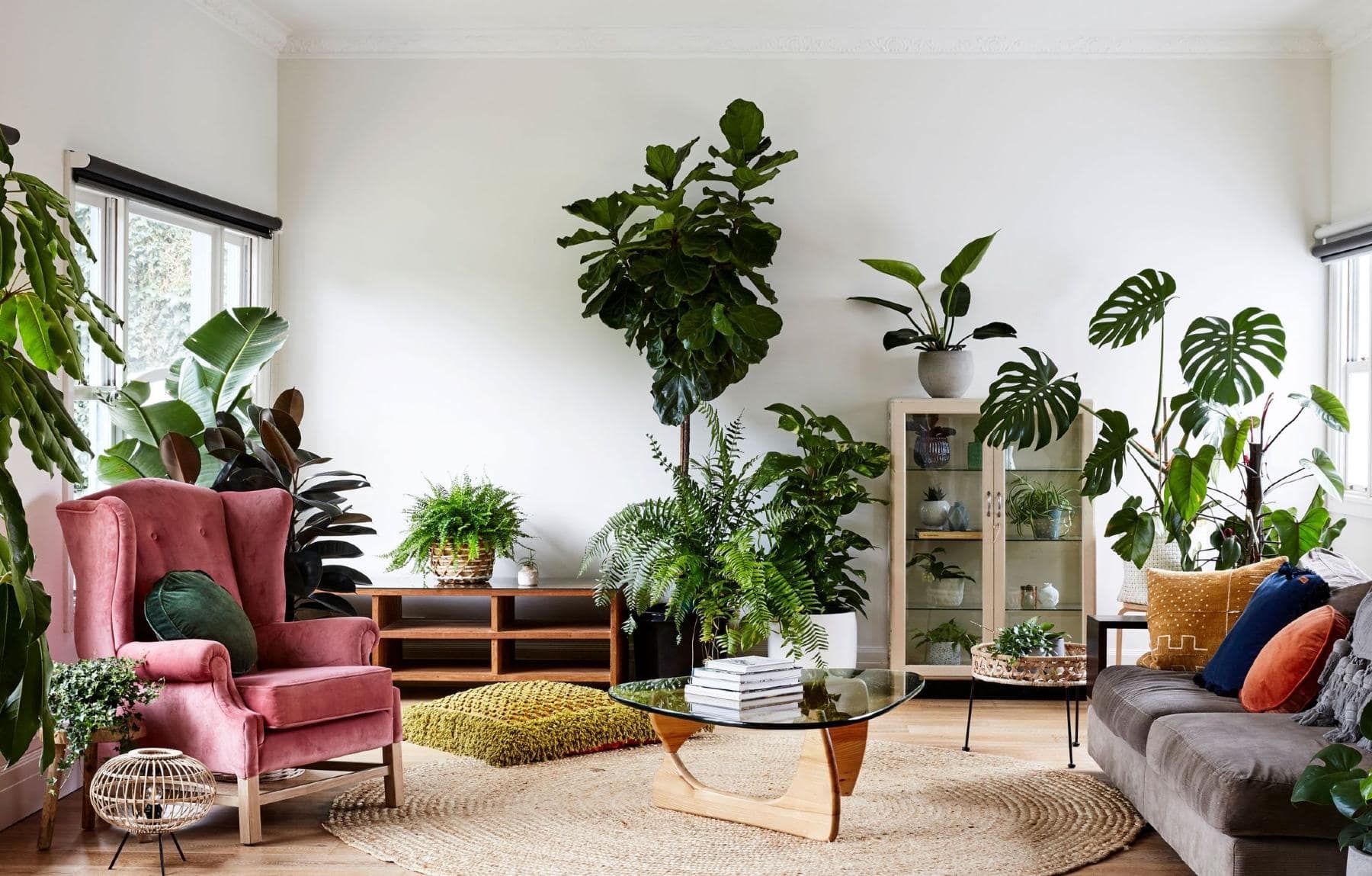
2 thoughts on “13 Common Houseplants: Transform Your Space!”